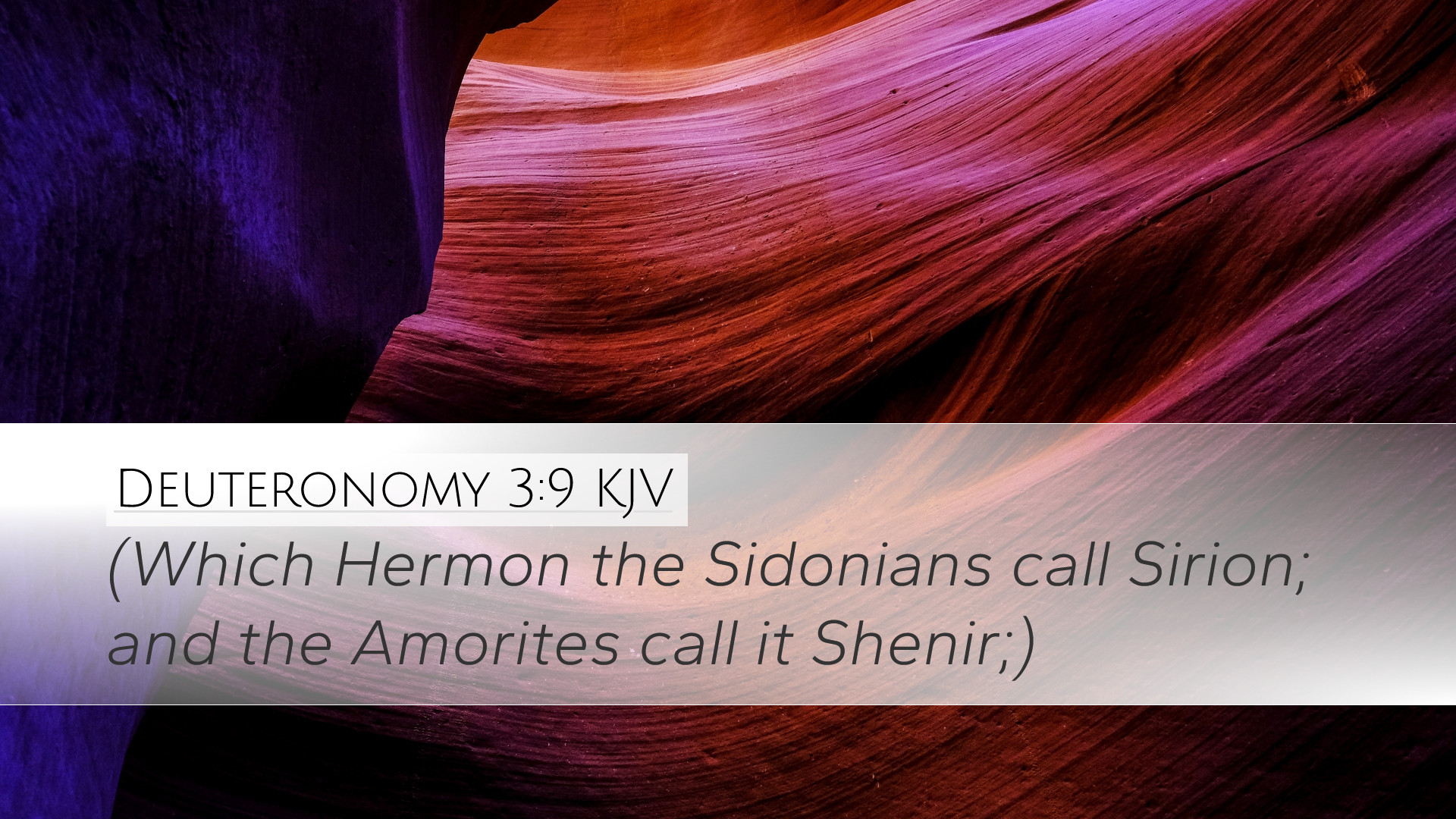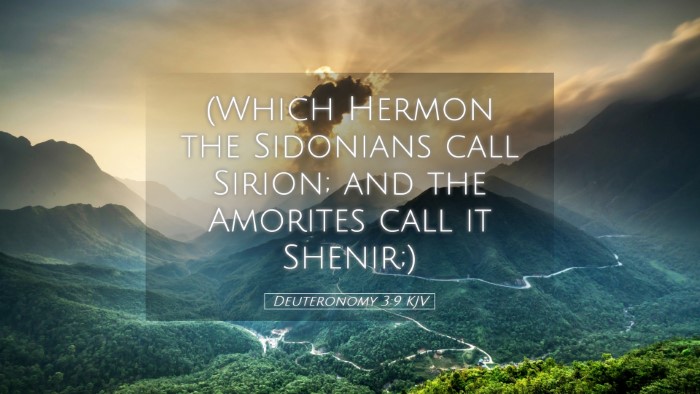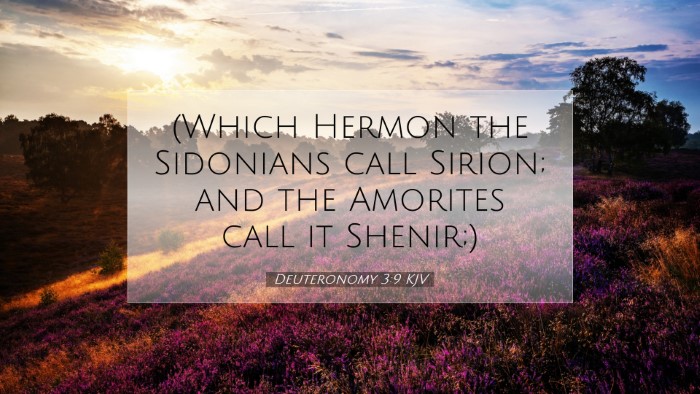Commentary on Deuteronomy 3:9
Verse Context: Deuteronomy 3:9 states, "The Sidonians call Hermon Sirion; and the Amorites call it Shenir." This verse addresses the geographical and cultural context of Mount Hermon, illustrating the diverse names attributed to this mountain by different peoples.
Overview
This verse holds significance as it emphasizes the regional diversity within Canaan and the distinct identities of neighboring nations. The reference to Mount Hermon—a high, prominent mountain—serves as a geographical marker in the broader narrative of Israel’s journey to the Promised Land. Understanding the implications of this verse requires examining its historical, theological, and cultural dimensions.
Theological Insights
- Diversity in God’s Creation: The different names assigned to Mount Hermon spotlight the cultural and linguistic diversity present in the ancient Near East. Albert Barnes notes that this diversity reflects the varied understandings of God’s creation among different peoples. It serves as a reminder that while God is the Creator of all, cultures perceive and relate to Him in diverse manners.
- Divine Sovereignty: Adam Clarke suggests that the naming of the mountain by different groups signifies God’s authority over all nations. No matter the name or the perception, God is sovereign, and all creation ultimately belongs to Him. This underscores the theological premise that God works through various cultures to accomplish His divine purposes.
- Jeremiah Contextualization: Matthew Henry presents that the naming conventions reflect not only geography but also how God’s people (the Israelites) perceive their heritage in the face of adversarial nations. The Israelites acknowledge these names yet assert their unique relationship with God, who grants them the land. Therefore, the account serves a dual purpose: historical record and reinforcement of identity.
Cultural Significance
- Local Geography: Understanding the mountain’s importance to the Sidonians and Amorites helps contextualize Israel’s environmental landscape. These civilizations recognized and attached religious significance to Mount Hermon, which was likely recognized for its vast natural resources and beauty. The mountain is often associated with the divine and the supernatural, as both a physical and spiritual landmark.
- Names Reflect Identities: The names "Sirion" and "Shenir" reveal cultural identities and perhaps even rivalries among ancient peoples. Each name carries with it historical narratives, myths, and values, which would have been important in understanding the region's socio-political dynamics. For pastors and theologians, this highlights the importance of contextual understanding in interpreting Scripture.
- Symbol of Sovereignty: The geographical markers such as Mount Hermon symbolize territories that form the backdrop of theological conflicts and territorial claims in the Old Testament. This notion of geographic and cultural identity comes into sharper focus within the broader context of Scripture when God addresses the promised inheritance of Israel.
Historical Context
This verse is embedded in the narrative of Deuteronomy, where Moses recounts the journey of Israel, their struggles, victories, and the promise of Canaan. Understanding the context of Deuteronomy is vital for scholars as it reflects Moses's leadership and the transitional phase of the nation from wandering in the wilderness into possessing the promised land, emphasizing the preparation and obedience required from God’s covenant people.
Practical Applications
- Cultural Sensitivity: Modern-day pastors and leaders in cross-cultural contexts can draw practical lessons regarding the significance of understanding the cultural histories and identities of people they interact with. Just as various groups named Mount Hermon differently, today’s ministry work requires embracing and respecting cultural diversity while proclaiming the Gospel.
- Identity in God’s Plan: Spiritual leaders are reminded that their identity, along with those they minister to, is rooted in God's call over human diversity. Recognizing the Lord’s plan for each person within their cultural context allows one to approach pastoral care and teaching with greater compassion and insight.
- Importance of Historical Context: This verse illustrates why it’s crucial to understand the historical context of Scripture. For theologians and students, it reinforces the commitment to studying the nuances of Biblical texts in relationships between geography, culture, and divine revelation.
Conclusion
Deuteronomy 3:9 serves as a rich tapestry of cultural, geographical, and theological insights that resonate deeply within the study of Scripture. As Matthew Henry, Albert Barnes, and Adam Clarke elucidate, the verse not only represents diverse cultural perspectives of a shared landmark but emphasizes God's sovereignty over history and creation. For pastors, students, theologians, and scholars, it provides an anchor point for discussing identity, cultural sensitivity, and the intricacies of God's covenant with His people.


